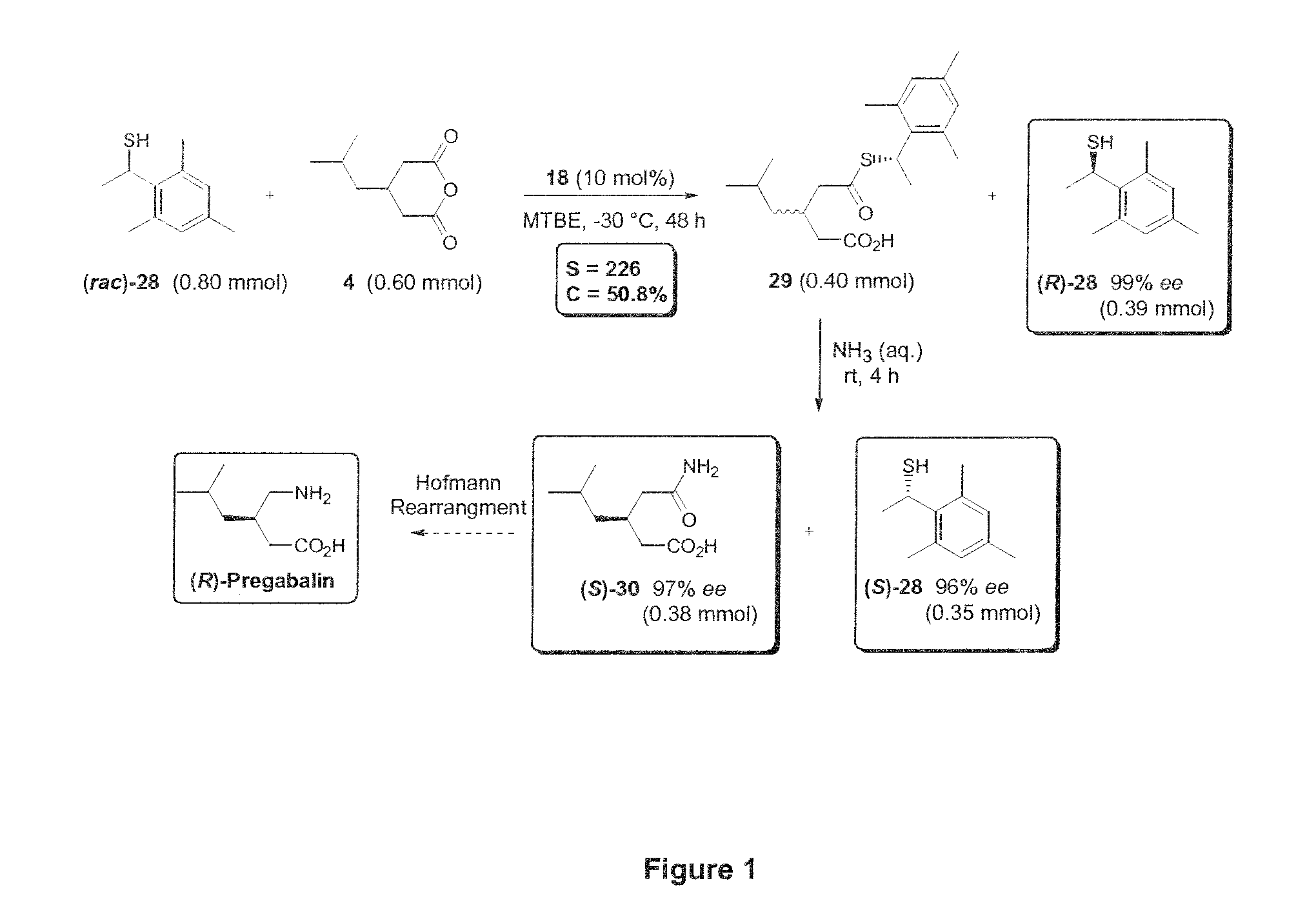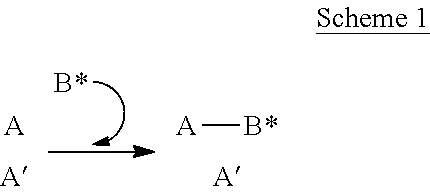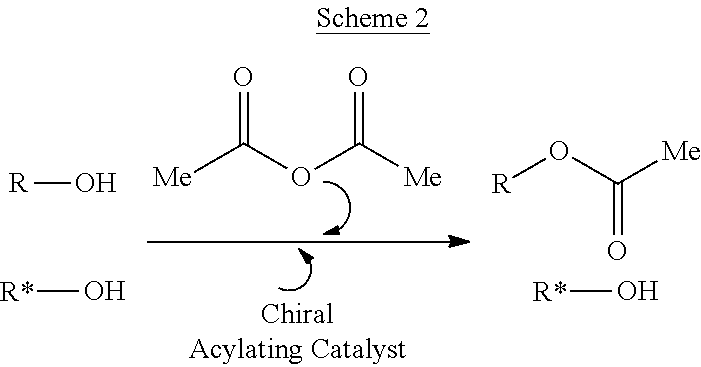Kinetic resolution
a thiol and stereoisomeric technology, applied in the field of kinetic resolution, can solve the problems of long reaction time, troublesome enzyme-mediated catalysis, and inability to combine enzymes with organic solvents,
- Summary
- Abstract
- Description
- Claims
- Application Information
AI Technical Summary
Benefits of technology
Problems solved by technology
Method used
Image
Examples
Embodiment Construction
[0112]It should be readily apparent to one of ordinary skill in the art that the examples disclosed herein below represent generalised examples only, and that other arrangements and methods capable of reproducing the invention are possible and are embraced by the present invention.
[0113]Preliminary experiments related to the acylative KR of the racemic sec-thiol 1 with glutaric anhydride (2a) in the presence of bifunctional (thio)urea-derived organocatalysts 10-12 and sulphonamide 13 (Table 1). Initial results were far from encouraging—acylation proceeded smoothly at low catalyst loading (5 mol %), but resulted in products of low enantiomeric excess (entries 1-4). Of the four catalysts tested sulphonamide 13 proved superior to the (thio)urea-derivatives and could promote the KR with a very modest selectivity (kfast / kslow) of 1.5 (13% ee at 50% conv., entry 4). Further experimentation identified methyl tert-butylether (MTBE) as the optimal solvent overall, although the KR of 1 was sl...
PUM
| Property | Measurement | Unit |
|---|---|---|
| enantiomeric excess | aaaaa | aaaaa |
| temperature | aaaaa | aaaaa |
| temperature | aaaaa | aaaaa |
Abstract
Description
Claims
Application Information
 Login to View More
Login to View More - R&D
- Intellectual Property
- Life Sciences
- Materials
- Tech Scout
- Unparalleled Data Quality
- Higher Quality Content
- 60% Fewer Hallucinations
Browse by: Latest US Patents, China's latest patents, Technical Efficacy Thesaurus, Application Domain, Technology Topic, Popular Technical Reports.
© 2025 PatSnap. All rights reserved.Legal|Privacy policy|Modern Slavery Act Transparency Statement|Sitemap|About US| Contact US: help@patsnap.com



